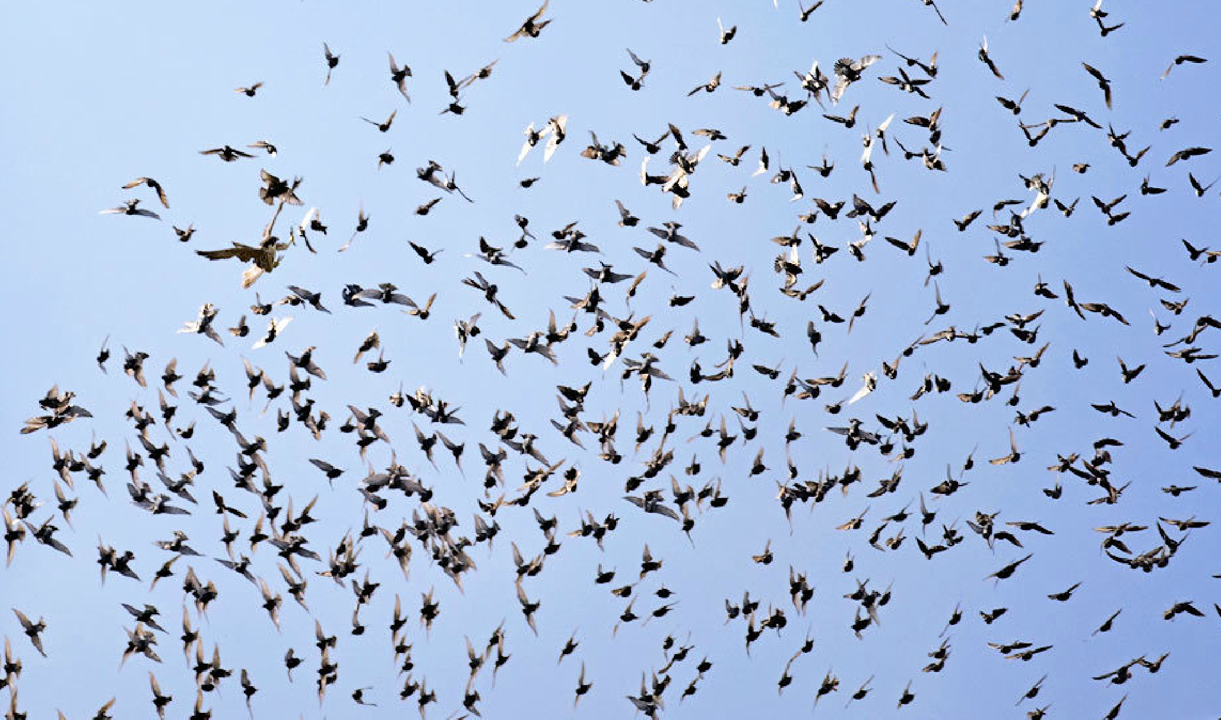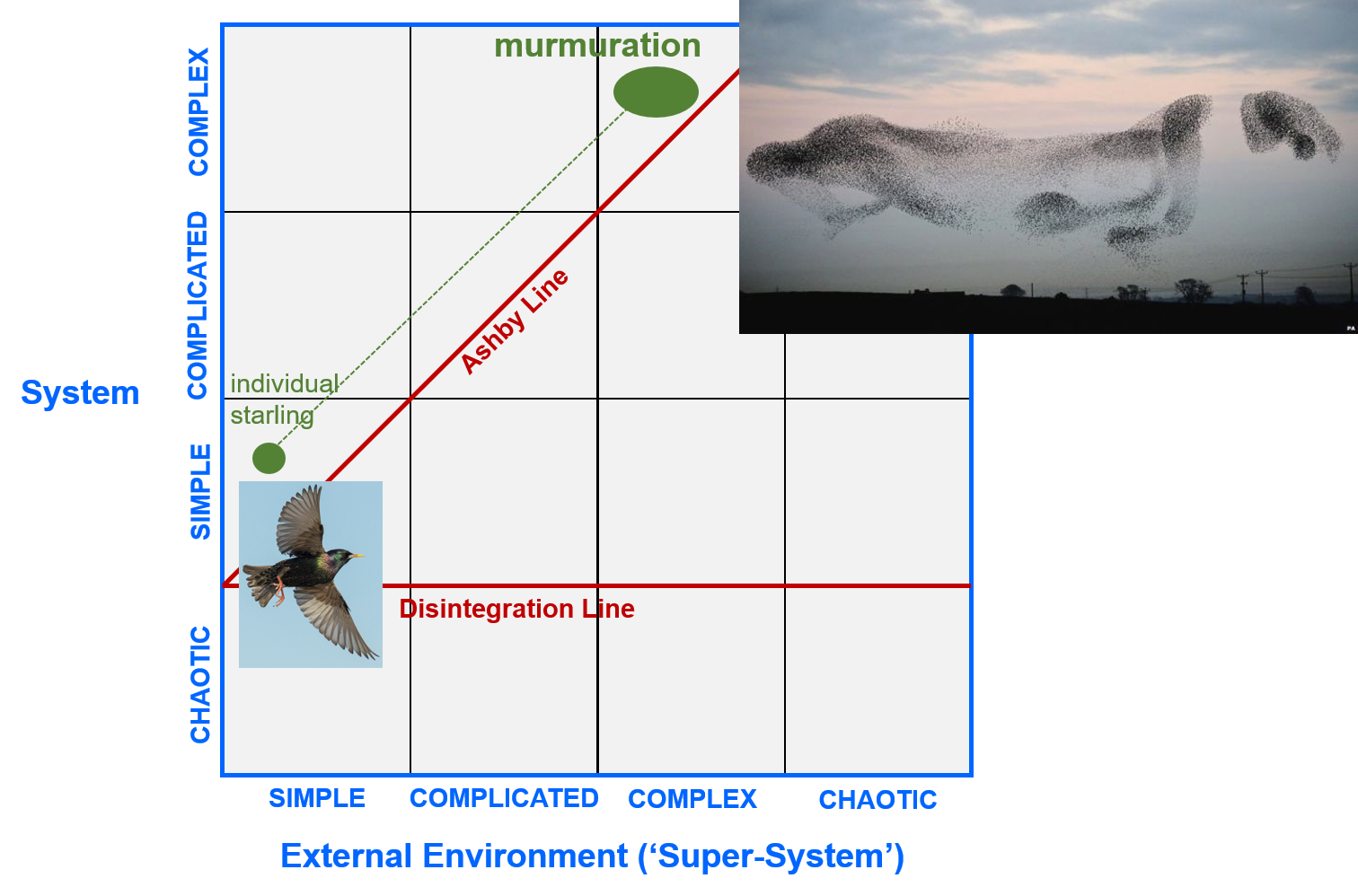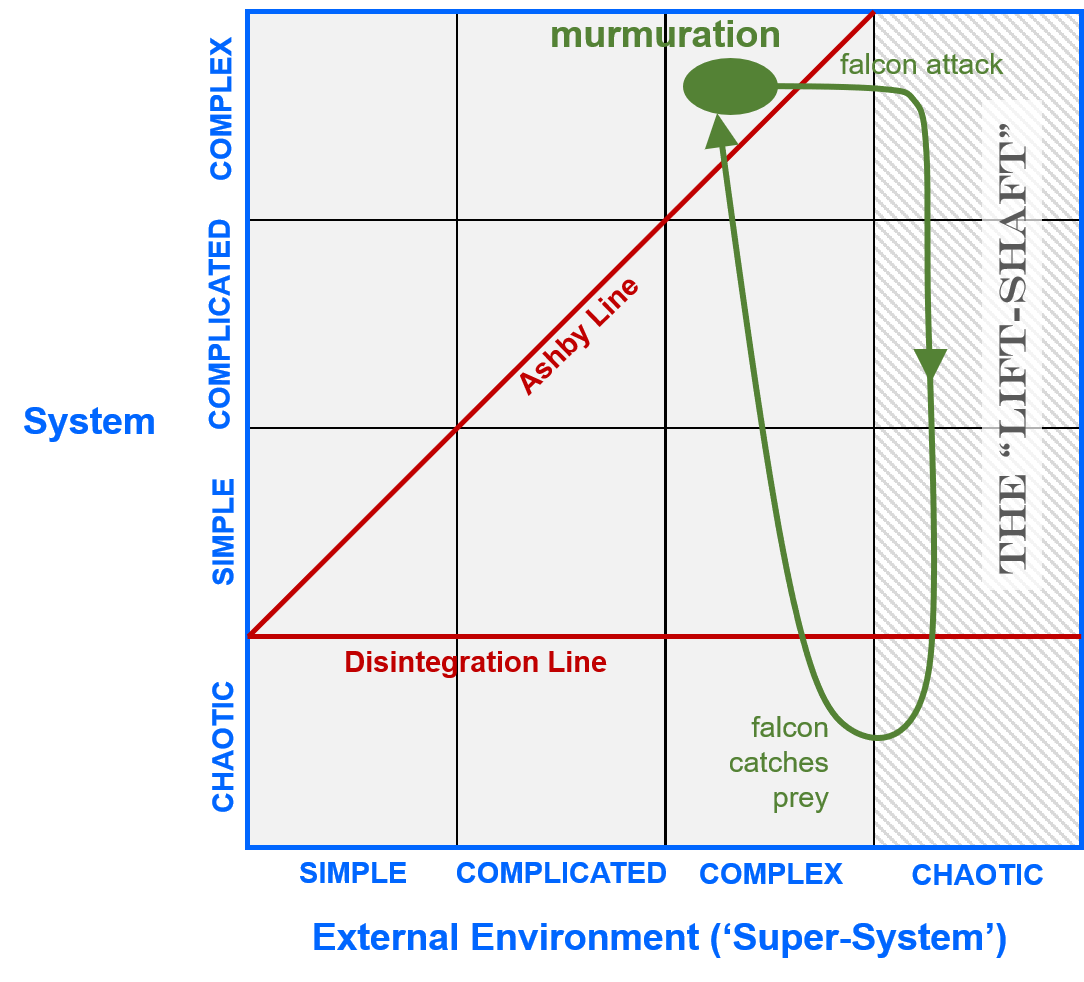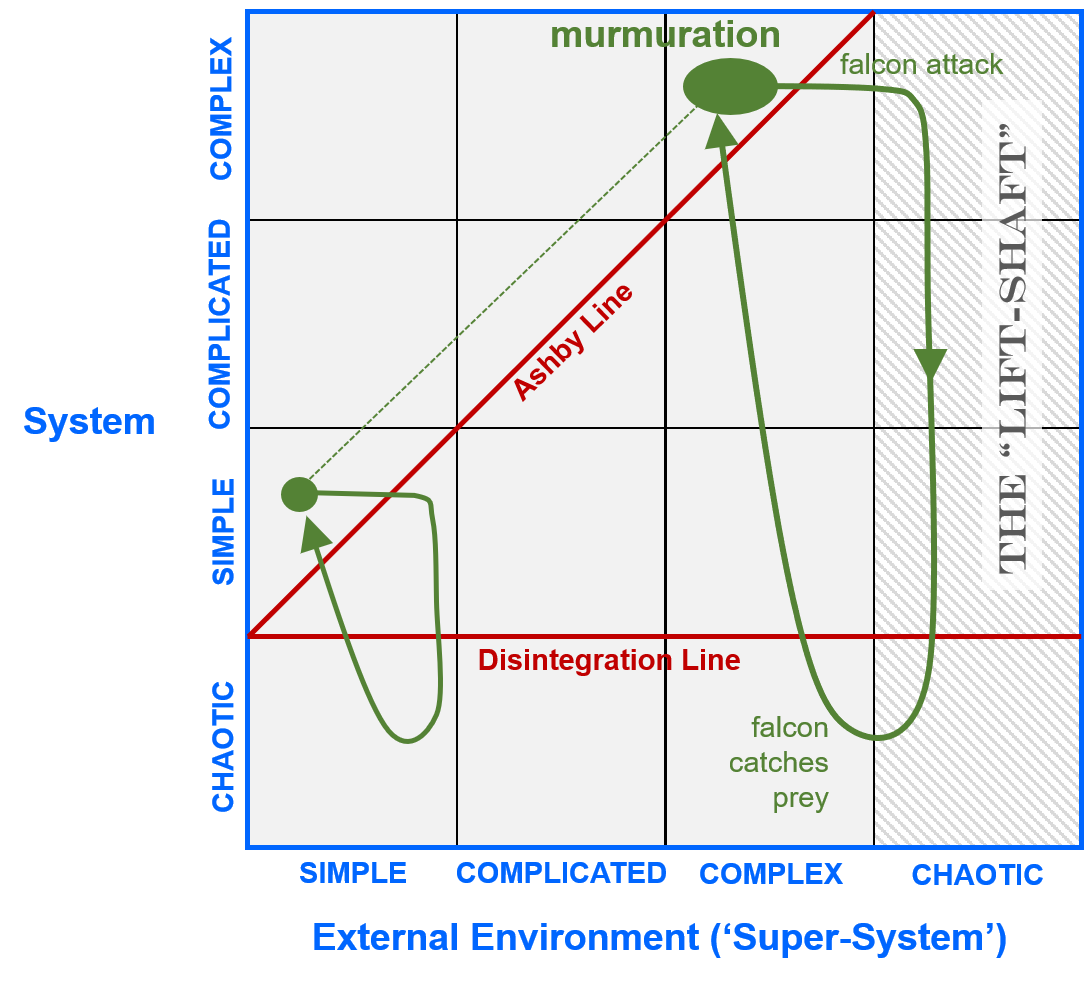
A murmuration of starlings is one of the complex system examples I use a lot in workshops. No starling is in charge and the shape of the formation emerges based on local shifts in the environment: a gust of wind or thermal causes one bird to deviate from its course, which then leads all the birds around it to have to deviate from theirs.
When a bird of prey arrives on the scene, however, as shown in the photo above, complexity quickly devolves into chaos. Now each starling instead of ‘staying as close to their neighbours as possible’ switches to a new rule: ‘get away from the falcon’. And chaos ensues.
For a while at least. Once the falcon has acquired dinner, the rest of the starlings know they’re safe. And so the Chaos can settle down again, back to the original complex system and its emergent patterns.
I thought I’d see what the story looks like when plotted onto the Complexity Landscape Model. I did it from two perspectives – firstly looking at the murmuration as a whole, and second zooming in and looking at one starling. Here’s what I think the two perspective look like prior to the arrival of the falcon: The murmuration as a whole is a complex system operating in a complex (weather-driven) environment, whereas, because each starling is flying to the same basic, simple ‘stay as close to your neighbour…’ instruction, I think we could describe this as simple-simple. Because the formation and each bird is operating stably, I’ve placed both above the Ashby Line:

Now let’s have a look at what happens when the falcon arrives. Let’s look at the whole formation first. The first impact of the falcon’s arrival is that the environment shifts to the right, across the Ashby Line. When the falcon first arrives, the formation doesn’t ‘know’ that the world as changed, but once the first starlings realise there is a new threat, then the formation swiftly devolves into chaos. Not only that, but each starling also quickly realises there’s a problem and the whole system tumbles into the Chaos-Chaos segment of the CLM. This breakdown happens very quickly. So the fall from a complex system to a chaotic one, looking at it on the Landscape, is rather like falling down a lift-shaft.

When the falcon has caught least weakest, most-adjacent starling, the chaotic environment stabilises, and then when the rest of the starlings realise this, the murmuration returns to its previous state.
At the level of the individual starling, the ‘environment’ becomes its immediate neighbours rather than the whole murmuration. At this level, the falcon emergency looks more like this:

The ‘lift-shaft’ fall is shorter this time because we’re starting from Simple rather than Complex, but nevertheless, its still a rapid tumble into chaos once the starling realises there’s a problem. I’ve drawn the trajectory such that the individual starling again returns to the same basic start point. If the starling in question is one of the ones that had a lucky escape, however, it may well be that they learn something from the experience and as a result make a subtle shift upwards (‘more resilient) and possibly diagonally to the right. I’m not sure though… I get to see murmurations a lot, and have done for a good number of years and I’ve not seen any evidence at all of starlings evolving to develop better falcon avoidance strategies. By the same token, I’ve witnessed several organisations falling down their own chaos lift-shafts and I haven’t seen much learning from them either. Time will tell.
